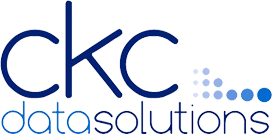FAQs Answered: A Comprehensive Guide to POE Lighting Technology
Are your facility’s power costs rising? One solution may come from power over Ethernet (POE) lighting. Our guide will answer all your questions about POE lighting so that you can make an informed decision when choosing this power-saving system for your business.
What Is POE Lighting Technology?
POE lighting refers to a system where power is provided to LED lighting fixtures through Ethernet cables instead of traditional electrical wiring. All you need is a single cable to power the light. The key is low-voltage lighting. That’s why you need efficient LEDs installed in your facility because they have lower power requirements.
But POE lighting does more than just lower power consumption over low-voltage lines. Thanks to the Ethernet cables, you can easily tell the lights when to come on, at what lighting levels, and when to turn them off using computer software. And you can collect data on power usage to optimize your facility’s lighting.
What Are Some Advantages of POE Lighting?
Using LEDs is just one advantage of this technology. Having greater control over your lighting is where POE lighting really shines.
With the ability to control lighting systems remotely through a centralized management platform, your facility manager can easily adjust lighting levels, create schedules, and monitor energy consumption. This level of control allows for greater customization and optimization of lighting conditions, leading to improved comfort, productivity, and overall user experience. Your lights become part of your building’s IT infrastructure.
With the power and data transmitted over a single cable, installation and maintenance become simpler and more cost-effective. You’ll lower overall building costs if you expand, renovate, or construct an entirely new facility.
POE lighting technology offers scalability. It’s much easier to adapt to changing needs with Ethernet cables versus traditional electrical wiring. This scalability ensures that lighting systems can quickly adapt to evolving needs and requirements.
Another thing to consider is safety. LEDs already last a very long time. When your staff needs to handle maintenance, which is now a lot farther into the future with LEDs, the low-voltage lines are safer to be around than traditional electrical lines. Let’s say a bathroom starts to leak, and water seeps through the floor and goes into a light fixture with POE lighting in the ceiling beneath it. The low-voltage lighting will be safer because it won’t conduct as much electricity as traditional lines.
What Are Common Applications of POE Lighting?
POE lighting technology has a wide range of applications that make it a versatile choice for commercial buildings. You can create smart lighting systems that are easily controllable and customizable. Your team can adjust lighting levels and schedules to optimize energy efficiency and create a comfortable environment for occupants.
POE lighting is also ideal for retrofitting existing buildings, eliminating the need for extensive rewiring. In addition, POE lighting can be used in outdoor spaces, such as parking lots or landscapes, providing efficient and flexible lighting solutions.
What Are the Components of a POE Lighting System?
The first component is the power sourcing equipment (PSE), which supplies power to the lighting fixtures. This source can be a POE switch or a POE injector, depending on the specific setup.
Next are the Ethernet cables, which serve as the conduit for both power and data transmission. These cables connect the PSE to the lighting fixtures, ensuring energy is delivered reliably and efficiently. The length and quality of these cables can impact the system’s overall performance, although Cat5 cables are usually sufficient. Lower-level Ethernet cables work because the light fixtures aren’t transmitting a lot of data, if any. But they are receiving data, such as when to turn off and on and what lighting level you need to be in.
The third major component is the lighting fixtures themselves, which can include a variety of LED fixtures such as bulbs, panels, or strips. These fixtures are designed to be compatible with POE technology, allowing for easy integration into the system.
Lastly, the lighting control system allows users to manage and customize their lighting settings. This control system can be a centralized management platform or a smart device, depending on the specific needs and preferences of the user.
The beauty of POE lighting systems is that, once implemented, it becomes easier to implement other smart building systems like temperature and humidity controls.
Cost of Implementing a POE Lighting System
Implementing a POE lighting system can vary in cost depending on several factors. Some of the main factors that can influence the cost include the size of the space, the number of lighting fixtures required, and the complexity of the installation process.
The quality of the components used in the system also impacts the upfront costs. The higher-quality components will last longer and get a better ROI over time.
While the upfront cost of a POE lighting system may be higher compared to traditional lighting systems, it’s essential to consider the long-term savings in energy costs and maintenance. Ultimately, the cost of implementing a POE lighting system is an investment that can provide significant cost savings for your utility and maintenance costs.
The labor hours to install PoE lighting could be up to 80% less than traditional lighting. The cost of the raw materials could also be about 20% less with PoE lighting. The reason is that PoE lighting is far less complex to install than line voltage lighting, and you’ll need fewer light fixtures for LEDs.
Comparing POE Lighting With Traditional Lighting
Why invest in POE lighting when you already have a traditional lighting system? One of the main differences is the method of power delivery. Conventional lighting systems rely on separate electrical wiring to deliver power to each individual light fixture. Traditional lighting can be time-consuming and expensive, especially when installing or modifying the system. Depending on your location, electrical codes might have additional requirements that could add costs to your project.
On the other hand, POE lighting technology utilizes Ethernet cables to transmit power and data to the lighting fixtures, simplifying the installation process and reducing costs. You won’t need extensive rewiring if you’re expanding your lighting infrastructure.
Another difference between POE lighting and traditional lighting systems is the level of control and customization. POE lighting systems offer centralized control and management, allowing users to remotely adjust lighting settings through a singular management platform or smart device. This level of control allows for greater customization, energy optimization, and overall user experience.
Energy efficiency is another area where POE lighting excels compared to traditional lighting systems. POE lighting uses LEDs, known for their energy-saving capabilities, versus other lighting, even fluorescents and CFLs. LED fixtures consume less power and have a longer lifespan, reducing energy consumption and maintenance requirements. If you’re looking for LEED certification, POE lighting offers one significant facet of your building’s design.
One significant advantage of POE lighting is its ability to easily integrate with smart building systems. You can connect your system with HVAC, security, and occupancy sensors, allowing for a more holistic and intelligent control of the building environment. Additionally, POE lighting can be integrated with building management systems (BMS) or automation platforms, providing a centralized interface for managing and controlling various building systems. This compatibility allows for seamless coordination and optimization of energy usage, resulting in more significant energy savings and overall efficiency.
Maintaining and Troubleshooting a POE Lighting System
Maintenance of POE lighting is relatively low-key. Check for any loose or damaged connections and inspect the Ethernet cables for any wear once a month. Clean the lighting fixtures to remove dust or debris, just like you would traditional light fixtures because dust could affect their performance.
If any issues arise, it may be helpful to consult the user manual or contact the POE lighting vendor for assistance. Additionally, keeping track of any software or firmware upgrades for the lighting control system can help prevent compatibility or performance issues.
How to Choose a Reliable POE Lighting Vendor
When searching for a POE lighting vendor, consider their experience and expertise in the field. Look for vendors who have a proven track record and positive customer references. Additionally, inquire about the vendor’s support and warranty options to ensure you will receive assistance if any issues arise.
The experienced team at CKC Data Solutions can assess your building’s current lighting infrastructure and give you an estimate for a cost-effective POE lighting system.
Contact us or call (417) 812-5251 to discuss your requirements.





